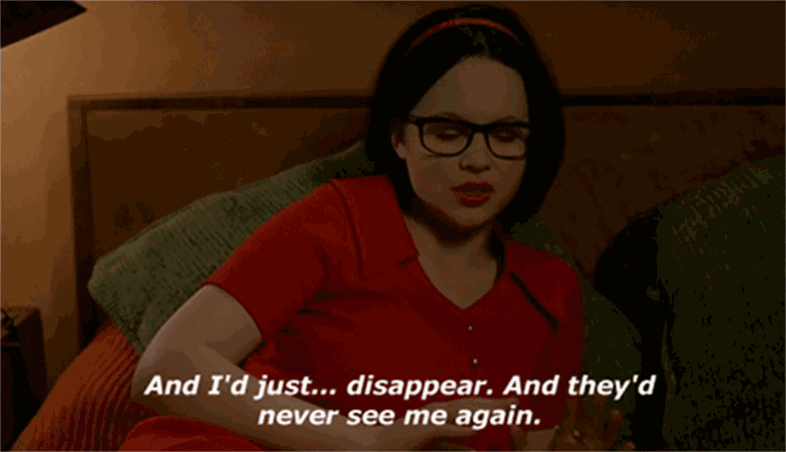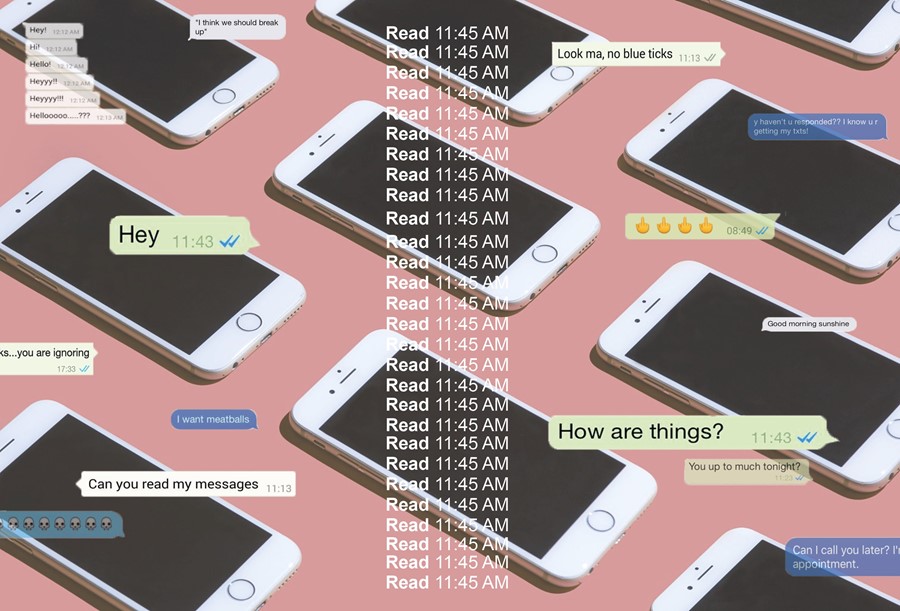Snapstreaks, group chats and ghosting: read receipts are changing the way we communicate
Instant Messaging has been around for years now. I spent the majority of my childhood sat on MSN hammering out emoji-riddled drivel to mates as fast and relentlessly as our temperamental dial-up connection would allow. But now, thanks to one frustrating little innovation from a hopeful techbro somewhere in Silicon Valley, this notion of instant messaging has manifested into a whole new monster, completely changing how we communicate for the worse. That thing being the dreaded read receipt.
Be it iMessage, Facebook Messenger, Whatsapp, DMs or Snapchat, it’s now virtually impossible to escape the anxiety-inducing clutch of read receipts, in whatever form they might assume. That ‘Read XX:XX’, the haunting blue ticks or small profile picture in the corner of a chat window now dictate all of our online communications. Even Facebook events have them now – making it even harder to ignore those countless invitations to shitty local gigs from that friend you haven’t spoken to in years or a co-worker’s birthday drinks that you’d do anything to avoid.
Read receipts first appeared in Apple products in 2011, though the function can be switched off. WhatsApp also offers the option to turn off the double blue tick in its settings. It’s more difficult to dodge them on Facebook and Snapchat though, which doesn’t offer any remedy. Some people go as far as using browser extensions and hacks to avoid the social media anxiety.

With ‘hyper-narcissism’ among young people, the read receipt, unsurprisingly, can have a detrimental effect on users and their mental health. The days of replying to someone when, you know, you actually have time are long gone. We now find ourselves in a world where every interaction requires an immediate response, regardless of whether you’re preoccupied with work, social events or just countless other Normal Life Things.
To get a better understanding of the harmful effects of the changes in the way we communicate online, we spoke to Dr Tony D. Sampson, a professor at the University of East London who has published various works on digital media cultures and communication – his recent projects look at social media through the lens of addiction and digital habit-forming.
“The aim is to trigger often negative emotions linked to compulsive behaviour” – Dr. Tony D. Sampson
When asked how the notion of instant messaging has changed in the last few years and with what impact, Sampson says: “The instantaneousness of responses has added a compulsive component to socialising on the web. Now that most people talk through Facebook, the whole process has begun to fit into their model of doing things – which is to create a habit-forming interaction that keeps users on the platform for as long as possible.”
There's the gut-wrenching and humiliating emotional sucker-punch of knowing someone’s seen your message but not replied straight away. We’re left questioning what we’ve done wrong or, probably more likely, furious at the receiver for having the audacity to not drop what they’re doing and get back immediately. We construct entire, baseless narratives around that ‘seen’ notification. Sometimes, we use them passive aggressively, ruthlessly informing people we’re unhappy with radio silence.

Elsewhere we're faced with the looming guilt and pressure that comes with inevitably looking like an asshole for ‘ghosting’ someone, regardless of any perfectly valid reasons for not being able to reply right away. We’re scrambling frantically to excuse ourselves for taking X amount of time to reply because we now feel we’re owed an instant response at all times.
Forgetting the sake of clingy, over-protective partners or friends for a second, you have to ask what kind of monster actually leaves read receipts on when given the choice. Because, other than in that instance, are there really any positive reasons for it? Sampson says the design aspects of social media are increasingly developed around habit-forming models of interaction: basically, Facebook and Whatsapp or whatever messaging system you’re on wants to keep you on there. Sampson explains: “The aim is to trigger often negative emotions linked to compulsive behaviour so as to keep people checking their social media page or using an app, not only to see if we have a response but to see if our message has even been read or not.”
In previous much-easier times a simple ‘sorry just seen this’ would suffice but now, in our increasingly connected world, the modern conversation is fraught with social anxiety: is bae pissed I left them on read? Can I post this fire tweet while avoiding the group chat?
“The more compulsive the checking of notifications and read receipts becomes, the more they keep the data flow alive and the more likely we are to keep giving away more information about ourselves that can be sold on” – Dr. Tony D. Sampson
It’s pretty clear the mass roll-out of these read receipt isn’t for our own gain and enjoyment, so the question is: why then? Tony argues that it all comes down to the need for corporate social media businesses to extract value from our social interactions, with our behavioural data rigorously logged and sold on to marketing companies. In regards to read receipts, he suggests that this is done in a more indirect way: “We’re told that the aim is to bring people together but this is how they make their money. The more compulsive the checking of notifications and read receipts becomes, the more they keep the data flow alive and the more likely we are to keep giving away more information about ourselves that can be sold on.”
Of course, Whatsapp wants those 1 billion people across 180 countries to keep checking in, and Facebook delights in your phone blowing up.
Speaking as someone who is absolutely dreadful at replying to people, it’s not hard to see the negative effects of read receipts first-hand – I think we’ve all experienced the frustration on both sides. But as they’re introduced to more and more platforms, we have to ask where it will stop. Could it leave us in some dystopian, Black Mirror-esque nightmare where we're all individually scored, or even ranked, on how quickly and consistently we interact with people? We already see the Chinese government bringing in those Nosedive-esque rating systems. With young people left devastated and borderline hysterical after losing a 571-day streak of consecutive replies, does Snapchat’s ‘Snapstreak’ feature not somewhat foreshadow this? Who knows, maybe it’s time to mute the group chat.




